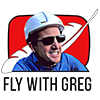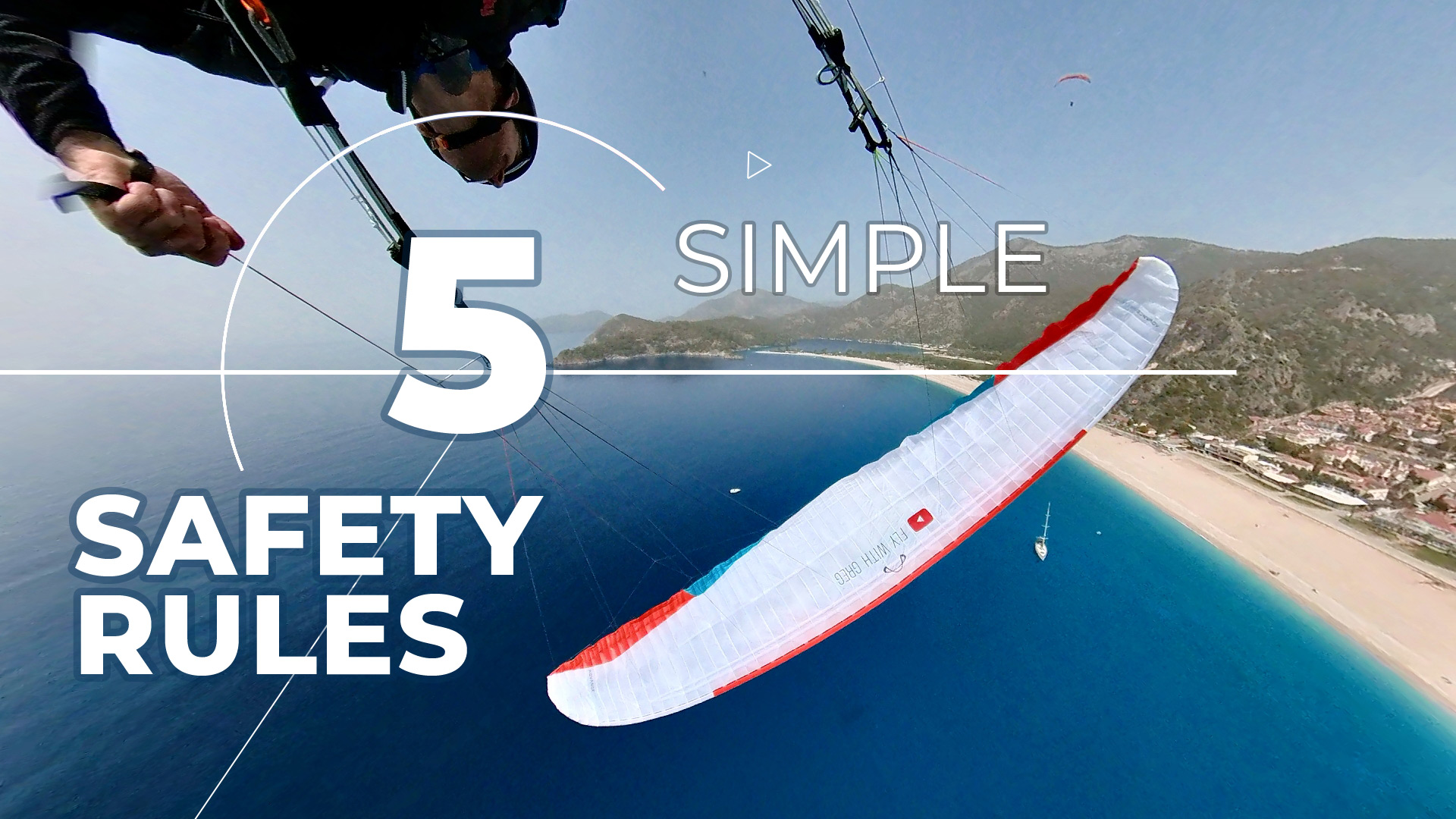When things go wrong with your paraglider, it’s good to know what to do. Here are 5 SIMPLE RULES for safety in paragliding.
1. What’s UP? Sit up, come off the speedbar and look up to see what you’ve got … before you react.
2. If it’s a COLLAPSE, lean away from the collapsed side, and put a little brake on the side away from the collapse. It’s just a touch of control. Then have a look at what you’ve got. Let the glider settle. If you need to, you can do a deep pump on the side that’s collapsed to re-inflate it. But don’t panic! Give the glider some time to balance out, to get onto a course, and then you can put in your correction.
3. What if it’s a CRAVATTE? (collapsed fabric trapped in the lines). The first thing you can try is a slow deep punch on the brake to see if that’ll get the cravatte out. If it doesn’t, reach up and do a big ears on that side … collapse the nose in, so that you release the pressure on the lines then reinflate it. That might get it out and if that hasn’t got it out, you can fish for the stabilizer line. It is the one connected to the wing tip. You can pull that down to try and get it through the cravatte and out. if that still doesn’t work you could try a bigger big ears on that side and then the stabilizer line while that’s collapsed so that you can get it out of that mess. But don’t focus too much on that cravatted side and lean towards it, because that’s when the glider will accelerate and go into a dive. Lean away from the cravat while you’re doing all of your fixing moves, because the danger with the cravat is getting turned.
4. What if you look up and it’s a FRONTAL collapse? Well usually the full frontal collapse goes in and out, so by the time you’ve looked up, you don’t see anything because it’s opened already. But if it’s stuck in, it might be that the nose and the glider has folded in and it just needs a short pump on the brakes to open the glider out again. Be careful not to do a slow deep pump just give it an impulse to see if you can open it because you want the glider to re-fly, you want to get to dive and accelerate, you don’t want to stall it by pulling on too much brake.
5. What if it’s a SPIN? How do you recognize that? The first thing is that you will be spinning WITH the glider. There might be a bit of a delay but you’ll be rotating instead of tipping forward, so if you look up and things are spinning around, you’re in a spin … usually one side of the glider will look a bit funny because the airflow gets reversed on that tip and you end up with the tip folding in underneath from the back. The trailing edge blows underneath. That’s a spin. The recovery? From a spin, go Hands Up. The glider will then dive. As it dives, catch the dive. Whenever the glider goes ahead like that you need to put in some brake input to catch it so that it doesn’t go too far and collapse in front. So that’s an easy one: hands up. If it dives, catch it.
FURTHER STUDY
I hope that helps keep you safe. Keep practicing these mentally so that you’re ready for them and you can be safe and enjoy your flying. See all 10 Safety Rules in the Flight Academy, where you can also develop your skills further in the WING CONTROL and SIV courses.
© GREG HAMERTON

